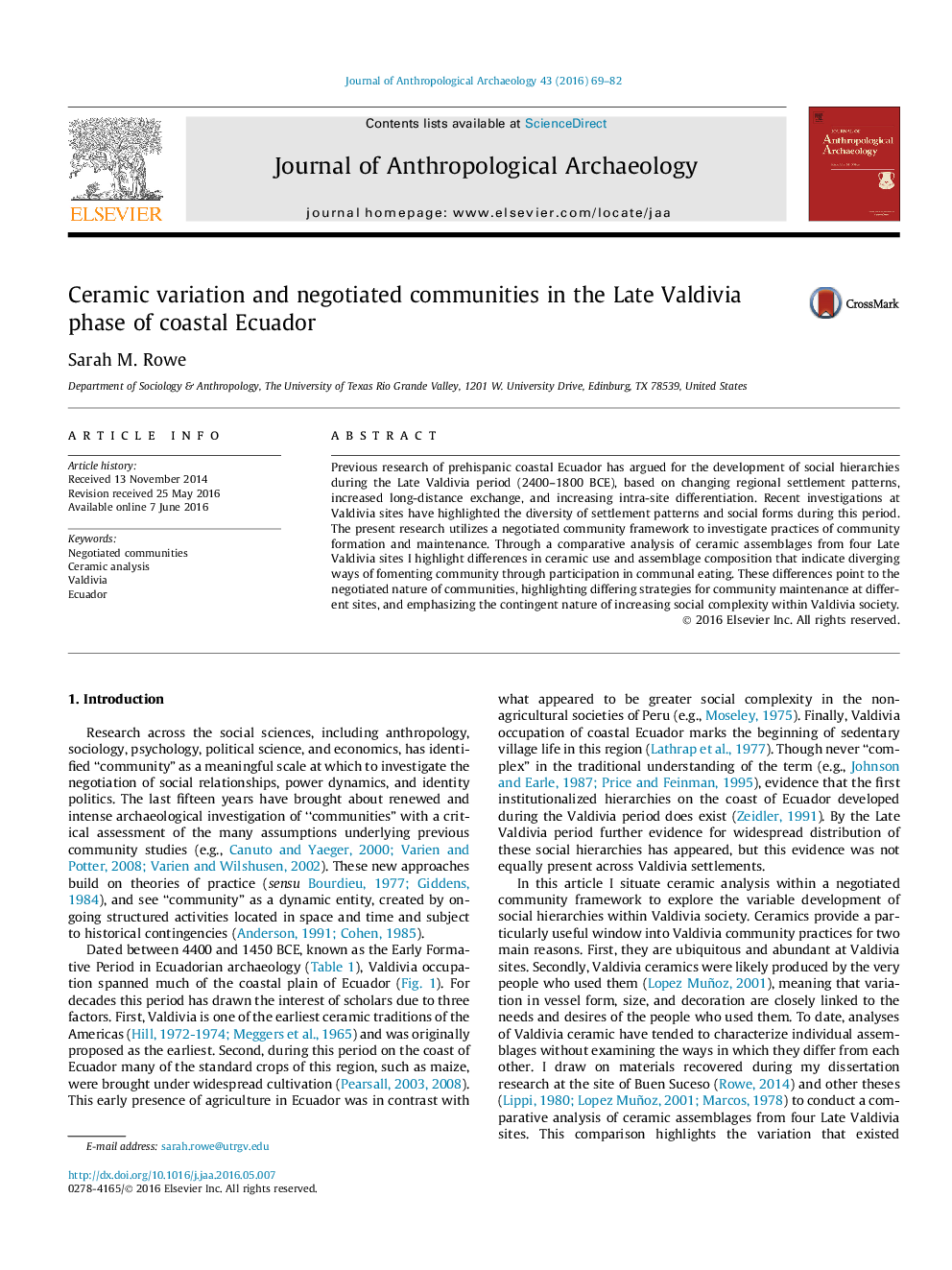| کد مقاله | کد نشریه | سال انتشار | مقاله انگلیسی | نسخه تمام متن |
|---|---|---|---|---|
| 1034849 | 1483847 | 2016 | 14 صفحه PDF | دانلود رایگان |
• A negotiated framework investigates practices of community formation and maintenance.
• Comparative ceramic analysis is used to reveal variation in community practices.
• Two ways of encouraging community cohesion through communal eating are identified.
• Social hierarchy in the Late Valdivia period was not evenly experienced.
Previous research of prehispanic coastal Ecuador has argued for the development of social hierarchies during the Late Valdivia period (2400–1800 BCE), based on changing regional settlement patterns, increased long-distance exchange, and increasing intra-site differentiation. Recent investigations at Valdivia sites have highlighted the diversity of settlement patterns and social forms during this period. The present research utilizes a negotiated community framework to investigate practices of community formation and maintenance. Through a comparative analysis of ceramic assemblages from four Late Valdivia sites I highlight differences in ceramic use and assemblage composition that indicate diverging ways of fomenting community through participation in communal eating. These differences point to the negotiated nature of communities, highlighting differing strategies for community maintenance at different sites, and emphasizing the contingent nature of increasing social complexity within Valdivia society.
Journal: Journal of Anthropological Archaeology - Volume 43, September 2016, Pages 69–82
